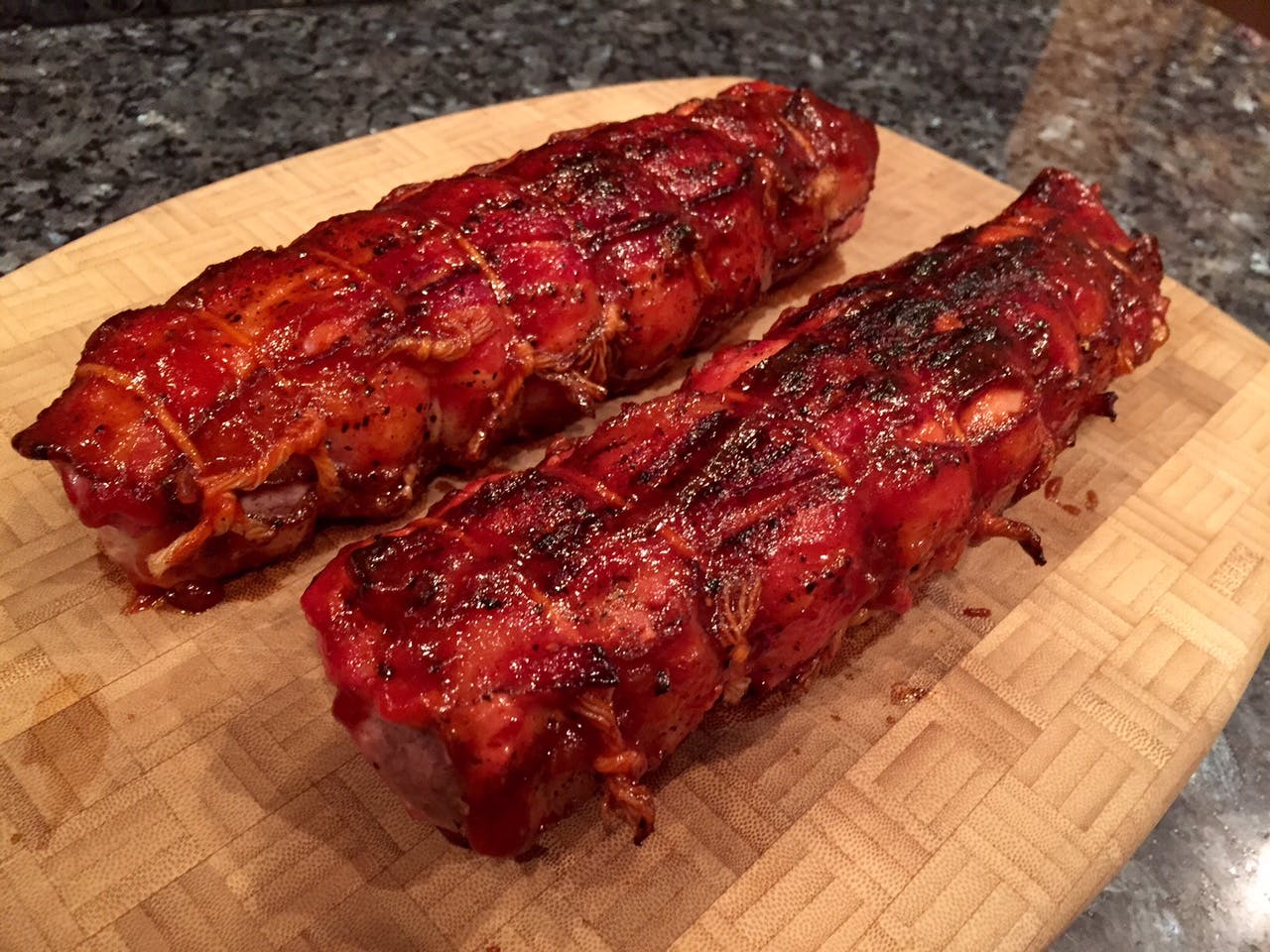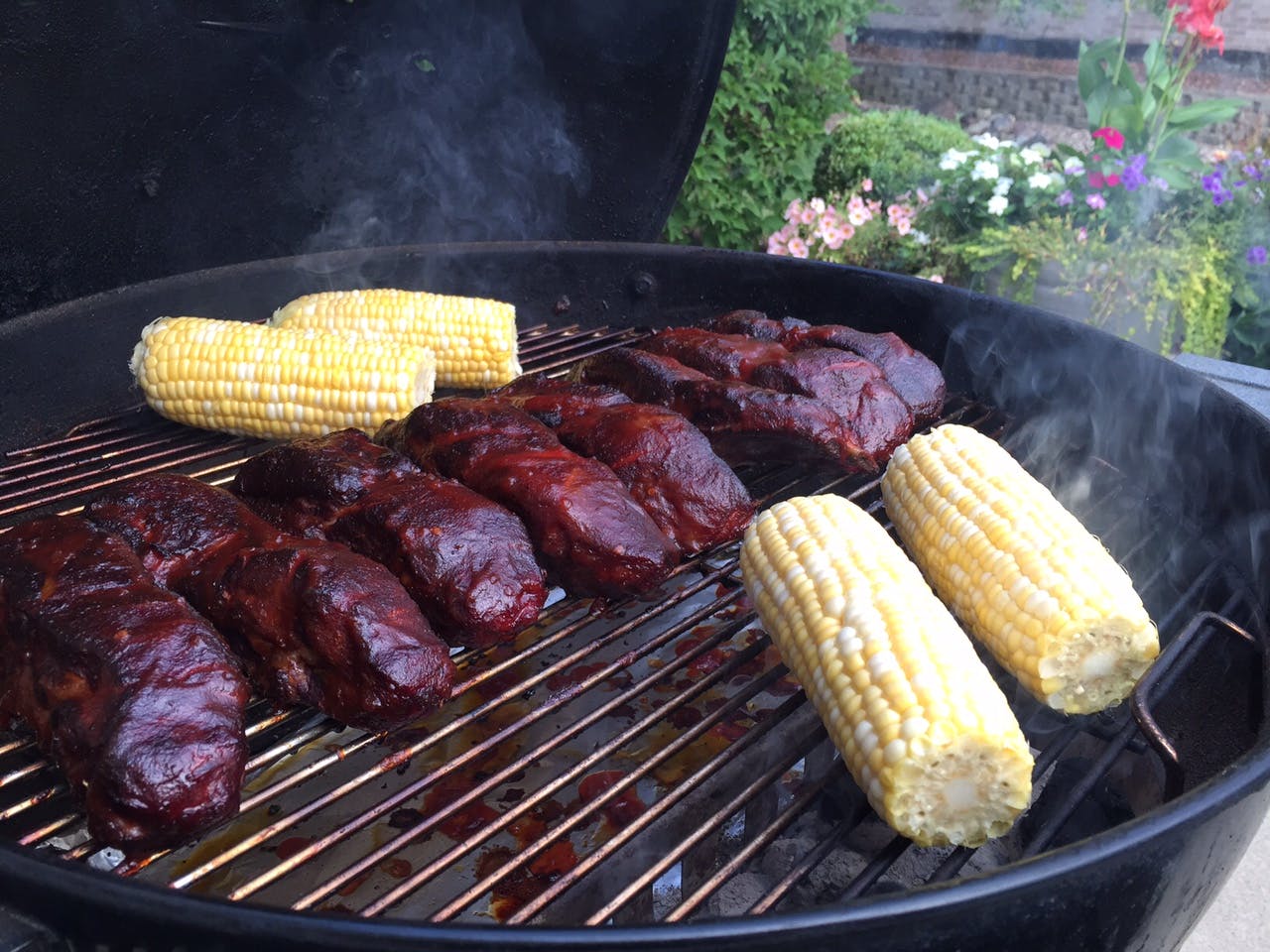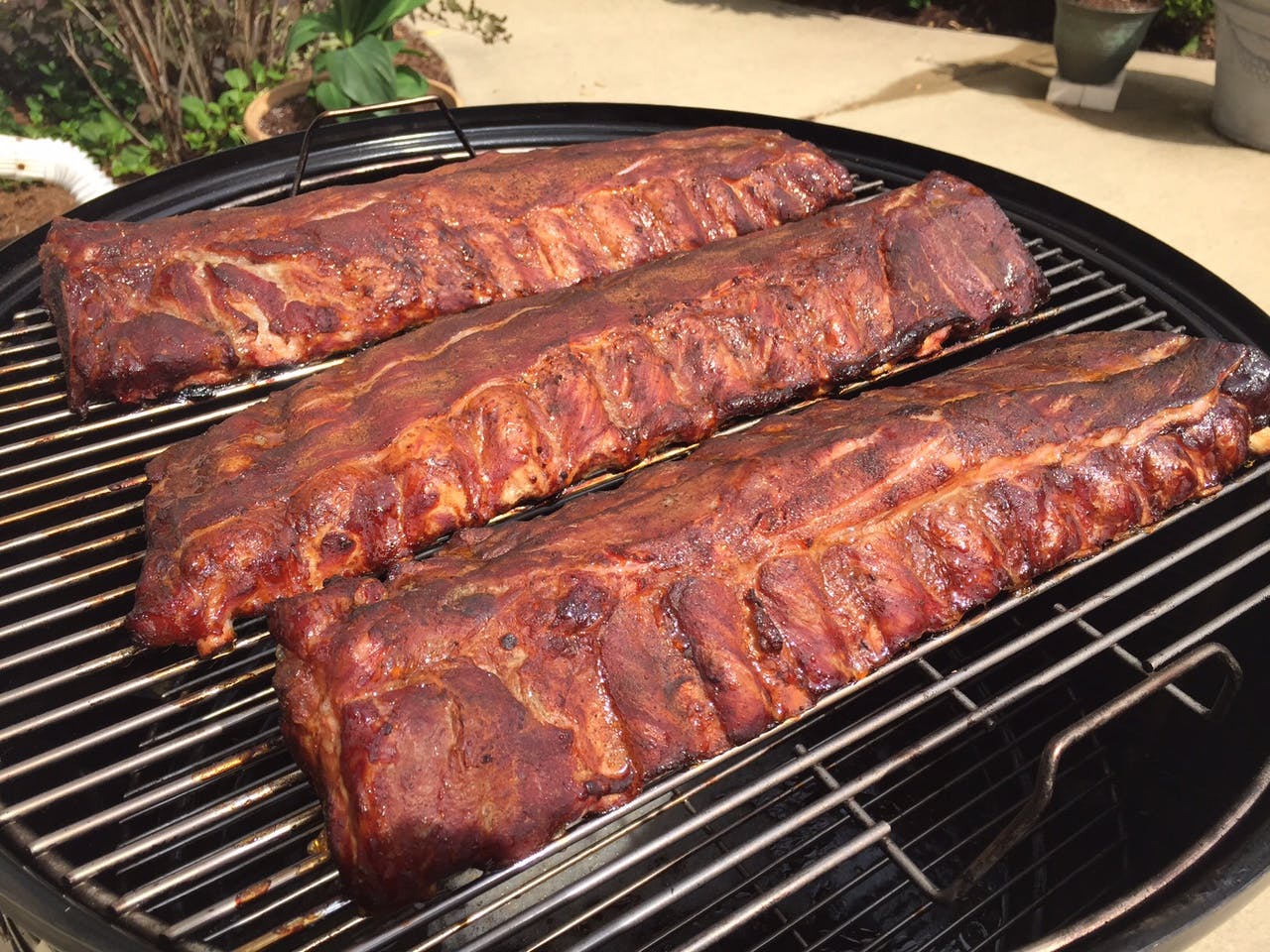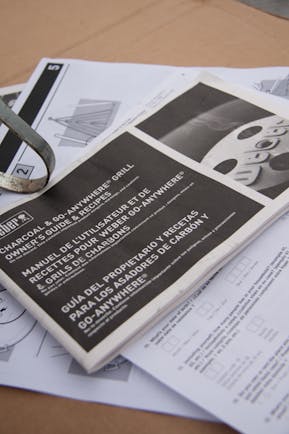A Butcher's Guide To Cuts Of Pork
There are four primal cuts of pork for retail use: the back leg, the loin, the side, and the shoulder. Each primal cut has its own unique texture and flavor, which is why pork is always a favorite in my house and grilled often!!
The pork shoulder, or “butt” has a great deal of marbling and connective tissue.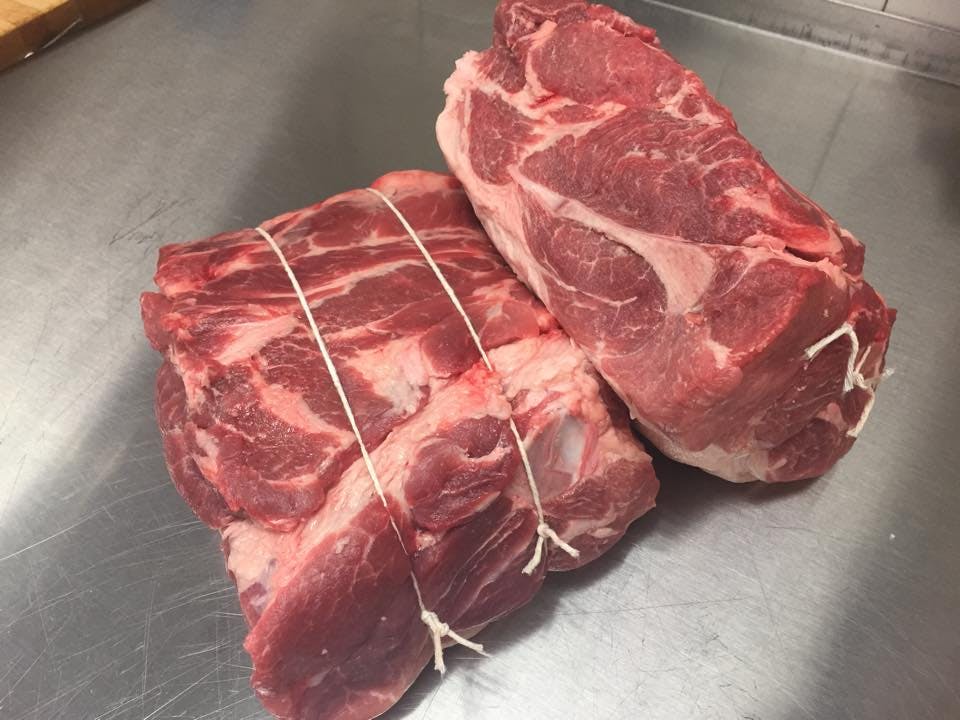
The proper cooking technique is required to make the shoulder tender. Low and slow is the way to go!! The pork shoulder is perfect for braising or stew. My favorite method is smoking the shoulder on my WSM to make pulled pork. 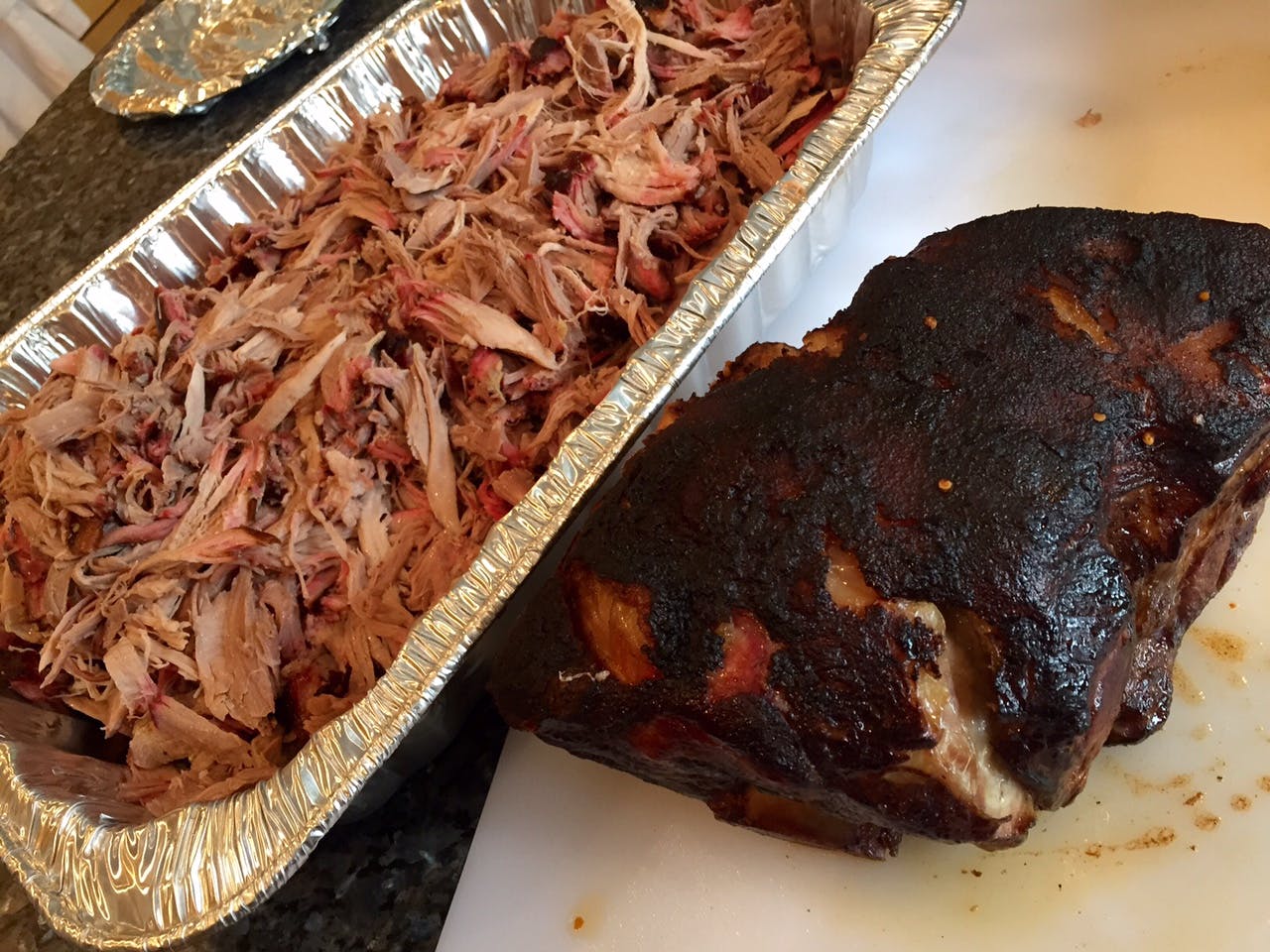
At my shop, we use the pork shoulder for making our very own fresh sausage. I feel this meat makes the best sausage as it has the right amount of lean meat and fat. To make the sausage, we simply remove the blade bone and coarse grind the meat, season with spices and herbs, and then stuff the sausage into natural hog casings.
We make a variety of different of sausages such as Italian, brats, Cajun, Polish, chorizo, and breakfast sausage, just to name a few. Fresh sausage can also be smoked or cured. Fresh ground pork is also best from the shoulder.
The loin is the animal’s back muscle from the hip to the shoulder.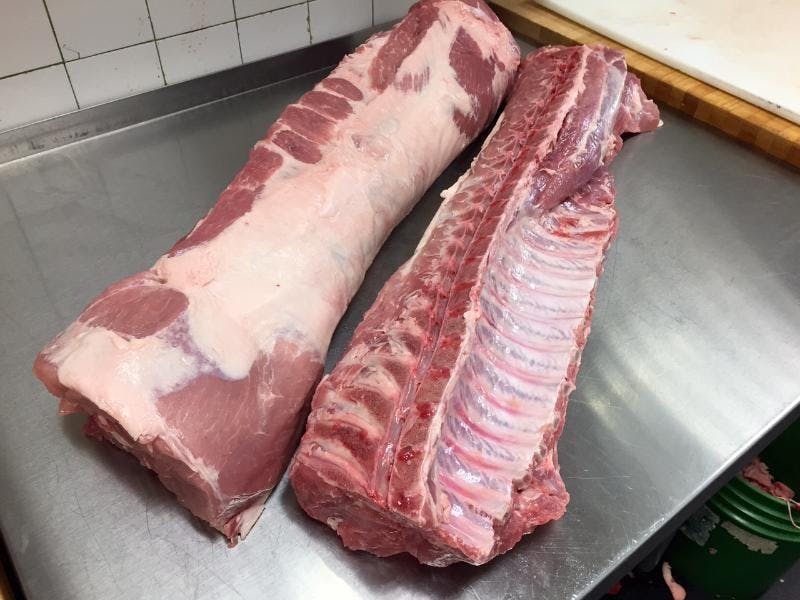
The loin includes some of the most tender and popular cuts. Center cut chops are from the middle of the loin and include rib and loin cuts. Center cut chops can be bone-in or boneless and are best when they are cut at least one inch thick, which will help them from drying out while grilling.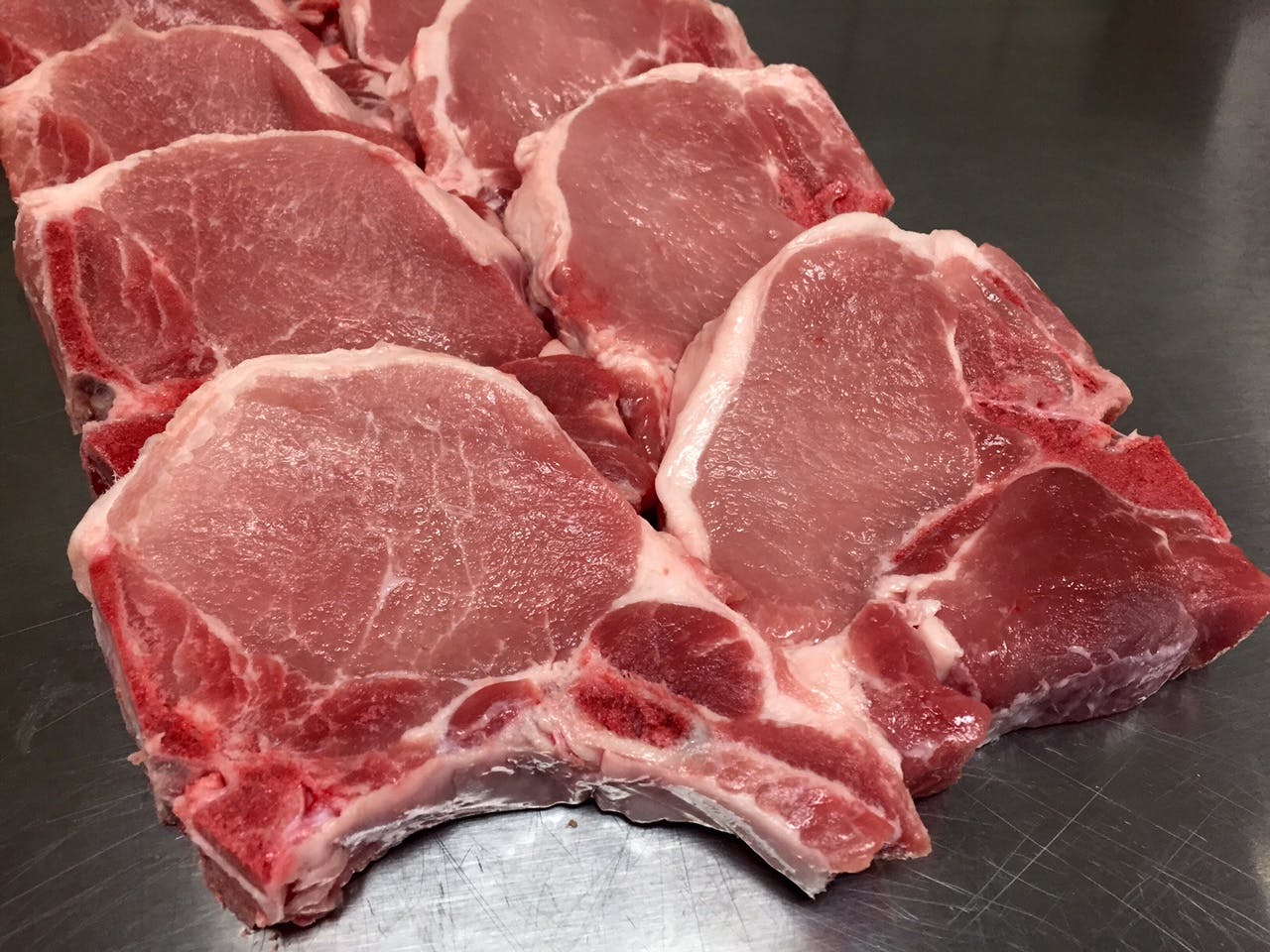
Roasts can be made from the loin and can vary in weight from two to ten pounds.
Crown roasts have a beautiful presentation for a holiday or special dinner. Boneless roasts can be butterflied open and stuffed with an array of items, including fresh herbs and fresh or dried fruit.
Pork tenderloin comes from underneath the loin. This muscle doesn’t get much use, which is why it’s so lean and tender. The average weight of a tenderloin is about one pound. Sometimes I’ll tie two tenderloins together and wrap them in bacon!!
Country ribs come from the rib end of the loin and are very meaty and tender. These four ribs are next to the shoulder and have a portion of the blade bone.
The loin end is next to the hip and is best for boneless pork cutlets.
Back ribs are from the loin and connect to the spine. They have curved bones that taper at one end. The average weight of a rack of ribs is about two and a half pounds, depending on how meaty they are. These are by far the most popular cut of ribs I sell.
The side or “belly” includes spare ribs and fresh pork belly.
Spare ribs have larger and flatter bones than back ribs and require a little longer cooking process to make them tender. The average rack will weigh about three and a half pounds.
Pork belly is mostly commonly used to make bacon, cured then smoked…now we’re talking!!! Who doesn’t love bacon?? I sell two different types of bacon: apple wood smoked and cherry wood smoked. Both have their own unique flavor and are delicious!
The back leg is mostly used to make ham- either bone-in or boneless. Some are dry cured, smoked, and then aged to bring out the most flavor. Boneless hams are muscles of the leg that are formed into an oval shape. During the curing process the proteins break down and allow the muscles to connect together making it appear to be a solid piece.
Interestingly, the USDA does not grade pork the same as beef. The USDA inspects does inspect pork for wholesomeness- meaning it has been inspected and passed from visible disease.
When shopping for fresh pork chops to grill, look for pale pink flesh, and pure white fat on your chops. Grill to an internal temperature of 145 degrees and let it rest for 3 minutes. 
So…. let’s get out there and grill some pork!!!
